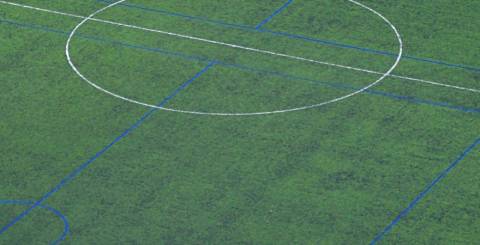The Four Types of Commercial Artificial Grass Used In Sports

In the modern-day sports world, commercial artificial grass is perhaps the most popular type of covering for sports pitches. The material’s versatility and long-lasting endurance, coupled with its ease of maintenance, has contributed to help it surpass natural grass as the preferred choice for sports club owners the world over.
What many of these owners may not be aware of, however, is that not every commercial artificial grass roll used to cover a sports pitch is entirely similar in nature. Much to the contrary, even discounting the variants meant for use in landscaping or domestic back gardens, there are several different types of turf carpets to choose from when looking to line a sports field. The lines below detail the differences between the four most common types of commercial artificial grass used for sports, and go into some detail about which sports each type is more or less suited for, so that sports club owners may make an informed choice when looking to line their playing facilities.
Sand-Filled
Sand-filled commercial artificial grass is the type most commonly used in amateur or recreational facilities meant to serve as pitches for multiple sports. This type of turf is as close as the commercial artificial grass market comes to a ‘one-size-fits-all’ solution, which explains its relatively widespread popularity among strictly recreational teams.
When it comes to professional leagues, however, this popularity does not bleed over; on the contrary, most professional sports pitches actively steer clear of this type of turf, instead opting for one of the other three types listed in this article. This is most likely because, of all the types of commercial artificial grass described, the sand-filled type is the least specialised, which puts it out of favour with professional clubs needing something slightly more optimised for their needs.
Water-Based
Water-based turf stands out for having no solid infill, thereby causing less abrasion to players upon contact with the surface. This makes it popular for sports where contact and tumbles are and it is, therefore, not at all surprising to find this type of turf is often used in pitches for those sports. Field hockey pitches, in particular, are more often than not covered with this type of turf.
Club owners looking to install water-based commercial artificial grass are, however, warned that, due to having no infill, this type of turf requires far more frequent wetting than other equivalent types. The level of watering needed is nowhere even close to what natural grass would require, but sports pitch owners opting to go with this type of turf should nonetheless be aware.
Sand-Dressed
Sand-dressed commercial artificial grass stands out from the others on this list for being much heavier and denser, largely thanks to its deeper-running infill and longer fibres. These characteristics allow for gameplay for different sports to be speedier than in other types of turf, making it popular for sports requiring quick reflexes, such as hockey or tennis.
Sports ground owners should be advised, however, that this type of carpet is not suited for rugby, and tends to only be accepted in sports pitches at schoolboy or curricular level. Owners looking to cover their recreational or professional-level European football pitches are better off going with any of the other types on this list.
3G
Finally, third-generation commercial artificial grass, or simply 3G, is characterised by its longer blades, and usually uses either a crumb rubber or sand infill.
This surface gathers some of the best traits of the other three types of commercial artificial grass described in this article, and is a high-performance material; as a result, it is the type of artificial grass most commonly used in professional-level sports pitches, and the type found in many turf-covered stadiums around the world. Because of the popularity this type of grass enjoys, the expression ‘3G’ is often used as a synonym for commercial artificial grass itself, though that is not an entirely accurate parallel.
By being aware of the different types of commercial artificial grass available for sports pitches, owners of athletic facilities can make sure their preferred type is also the most suitable for the sport or sports they are offering!
